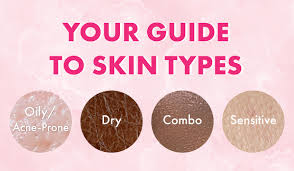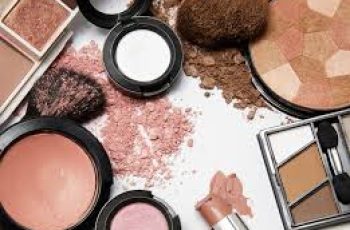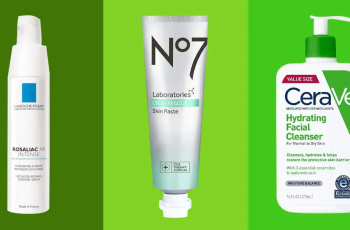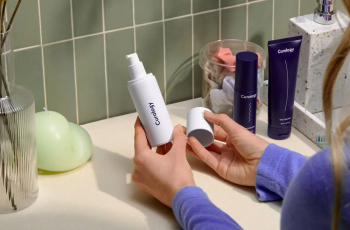
.webp)
.webp)
.webp)
Understanding Dry Skin Types: How to Choose the Right Treatment for You
.webp)
.webp)
Does your skin feel rough, tight, and like sandpaper? Do you find that heavy moisturizers are the only thing that can ease your skin’s discomfort?
.webp)
.webp)
.webp)
If your skin is prone to dryness, you’re likely dealing with one of the Dry Baumann Skin Types®.
.webp)
.webp)
Understanding your exact skin type is the first step in developing an effective skincare routine to repair and protect your skin barrier.
.webp)
.webp)
.webp)
What Is a Dry Baumann Skin Type®?
.webp)
.webp)
There are 8 distinct Dry Baumann Skin Types, all of which have difficulty holding onto water and are prone to dehydration. These skin types are divided into two groups:
.webp)
.webp)
.webp)
Dry Sensitive Skin, Dry Resistant Skin
.webp)
.webp)
Each group requires a different approach to skincare based on other factors such as skin sensitivity, acne, rosacea, or wrinkles. Let’s dive deeper into these skin types and their treatment.
.webp)
.webp)
.webp)
Common Symptoms of Dry Skin
.webp)
.webp)
No matter which specific Dry Baumann Skin Type® you have, most people with dry skin experience these common symptoms:
.webp)
.webp)
.webp)
Dull, sallow skin: The skin lacks a healthy glow and looks lackluster.
.webp)
.webp)
Rough texture: Skin feels uneven, rough, and gritty to the touch.
.webp)
.webp)
.webp)
Scaly patches: Dry skin often appears flaky, especially around the cheeks, chin, and forehead.
.webp)
.webp)
Itchy or tight feeling: Skin may feel tight or even sting when exposed to environmental factors.
.webp)
.webp)
.webp)
Dryness around specific areas: Cheeks and chin are usually drier than other areas of the face.
.webp)
.webp)
How Do You Know If You Have Dry Skin?
.webp)
.webp)
.webp)
The best way to know if you have dry skin is to understand Transepidermal Water Loss (TEWL), a measure of how much water evaporates from your skin.
.webp)
.webp)
This can be accurately measured with a tewameter, which helps assess how well your skin retains moisture.
.webp)
.webp)
.webp)
Another tool is the Corneometer, which measures the water content in your skin. Consistently low readings may indicate that your skin has difficulty retaining moisture, a common sign of dryness.
.webp)
.webp)
The 8 Different Dry Baumann Skin Types®
.webp)
.webp)
.webp)
These 8 dry skin types are divided into two groups:
.webp)
.webp)
1. Dry Sensitive Skin
.webp)
.webp)
.webp)
This group is prone to irritation, sensitivity, and discomfort. Common conditions within this category include:
.webp)
.webp)
Acne Dry Skin: Dryness and acne may occur together, causing both oiliness and tightness.
.webp)
.webp)
.webp)
Rosacea Dry Skin: Individuals with rosacea experience redness and dryness, which can make their skin prone to irritation.
.webp)
.webp)
Stinging Dry Skin: Skin that feels irritated or painful after applying products.
.webp)
.webp)
.webp)
Allergic Dry Skin: Skin that reacts to certain ingredients, resulting in dryness, redness, or itching.
.webp)
.webp)
Treatment: These individuals should focus on soothing, calming products that hydrate while minimizing irritation.
.webp)
.webp)
.webp)
Look for non-foaming cleansers, barrier repair moisturizers, and products with anti-inflammatory ingredients like ceramides and niacinamide.
.webp)
.webp)
2. Dry Resistant Skin
.webp)
.webp)
.webp)
Those with Dry Resistant Skin experience dryness without sensitivity. They’re less likely to develop irritation or allergic reactions.
.webp)
.webp)
The skin may be rough and dry, but blemishes and rosacea are not common.
.webp)
.webp)
.webp)
Treatment: A more general approach to moisture and hydration can be applied. These individuals can use richer products like lipid-rich creams and cleansing oils.
.webp)
.webp)
How to Solve Dry Skin Problems
.webp)
.webp)
.webp)
Dry skin problems like rough texture, dullness, and irritation stem from a damaged skin barrier. When the skin barrier is compromised, water evaporates faster, leaving the skin feeling dry, itchy, and tight.
The best solution to combat this is by repairing the skin barrier with products designed to replenish and protect it.
The right cleanser and moisturizer play a significant role in helping the skin retain moisture and improve texture.
What Are the Best Face Products for Dry Skin?
The right skincare products for dry skin should:
Hydrate and seal in moisture without irritating the skin.
Repair the skin barrier, especially for dry, sensitive skin.
Address any other concerns such as uneven skin tone, aging, or acne.
Here’s a breakdown of the best products for dry skin:
Cleansers for Dry Skin
Non-foaming Cleansers: Look for creamy, oil-based cleansers that don’t strip away moisture. Cleansing oils and lipid-rich creamy cleansers help to lock in moisture and repair the skin barrier.
Avoid foaming cleansers that contain harsh detergents, as they can further dry out the skin.
Moisturizers for Dry Skin
Barrier Repair Moisturizers: These are essential for restoring the lipid barrier. Look for moisturizers containing ceramides, cholesterol, and fatty acids like linoleic acid.
These ingredients replenish the skin’s natural oils and help to prevent moisture loss.
Heavy Moisturizers for Very Dry Skin: Those with extremely dry skin may need richer creams and oils to repair and lock in moisture.
Hydrating Oils: Oils such as jojoba oil, argan oil, and safflower oil provide deep hydration and nourishment.
The Best Skincare Routine for Dry Skin on the Face
Your skincare routine should focus on repairing the skin barrier, hydrating the skin, and preventing moisture loss. Here’s a basic routine for dry skin:
Cleanser: Use a non-foaming, creamy cleanser that doesn’t strip your skin of its natural oils. Cleansing oils are also a great option.
Toner: If you use a toner, make sure it’s alcohol-free and hydrating. Look for products with glycerin or hyaluronic acid to draw moisture into the skin.
Serum: Opt for a hydrating serum with ingredients like hyaluronic acid and glycerin, which help to attract moisture to the skin and retain it.
Moisturizer: Apply a barrier repair moisturizer that contains the right fatty acids, ceramides, and cholesterol. Make sure it suits your specific Baumann Skin Type®.
Sunscreen: Always protect your skin with broad-spectrum SPF to prevent sun damage that can worsen dry skin and lead to premature aging.
How to Choose the Best Moisturizer for Your Dry Skin
When selecting a moisturizer, it’s important to consider your Baumann Skin Type® as well as any other skin concerns you might have. For example:
For dry skin with dark spots, choose a moisturizer that includes linoleic acid. This will complement skin lightening treatments and help even out skin tone.
For dry skin with fine lines, look for moisturizers with ingredients like retinol or peptides to promote collagen production.
Summary: Customizing Your Dry Skin Routine
The key to addressing dry skin is customizing your skincare routine based on your Baumann Skin Type®. Whether you have dry sensitive skin or dry resistant skin, your routine should include:
A non-foaming cleanser to preserve the skin barrier.
A barrier repair moisturizer that restores lost lipids.
Hydrating oils or serums to maintain moisture.
Protection from external irritants (e.g., sunscreen and climate control like humidifiers).
Once you identify your skin type and concerns, you can choose the best products to address dryness, irritation, and any other specific issues you may be facing.
Would you like to explore specific product recommendations or take a skin quiz to determine your Baumann Skin Type®?



